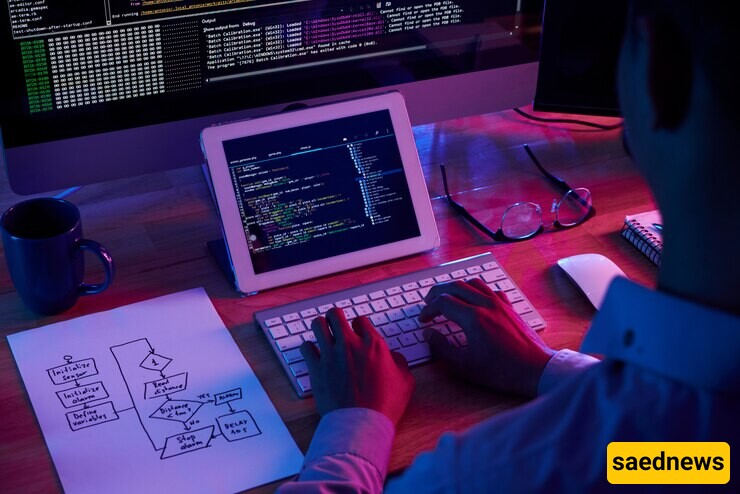SAEDNEWS: Coding is evolving into a universal language shaping industries and societies worldwide. As technology continues to advance, coding skills are becoming essential for communication, innovation, and problem-solving across borders.

According to SAEDNEWS, in the digital era, coding has transcended its technical roots to become a vital skill for communication and innovation. Much like spoken languages bridge cultural divides, coding bridges technological and geographical gaps. As industries worldwide integrate technology into their operations, coding has emerged as a common thread that connects diverse sectors and societies.

The demand for coders is skyrocketing across the globe. From software development to artificial intelligence, industries rely on programming to streamline processes and create innovative solutions. Countries like the U.S., India, and China lead in tech innovation, while emerging economies are rapidly adopting coding to foster growth.
According to a report by the World Economic Forum, nearly 65% of today’s students will work in jobs that don’t yet exist—many of which will require coding skills. This rising demand reflects the growing importance of coding as a universal tool for problem-solving and productivity.
One of the most remarkable aspects of coding is its universal applicability. Programming languages like Python, JavaScript, and C++ are the same in New York, Tokyo, or Nairobi, enabling seamless collaboration between developers worldwide. Coders from different cultures and backgrounds can contribute to the same project without language barriers, making coding a truly global language.
This universality also plays a key role in remote work. As companies embrace distributed teams, coding serves as the backbone for collaboration, allowing professionals to work together regardless of location.
Coding is no longer confined to computer science majors or tech professionals; it’s becoming a fundamental skill taught in schools worldwide. Initiatives like Code.org and Hour of Code promote programming education for children, while online platforms such as Coursera and Udemy offer affordable coding courses for learners of all ages.
Governments and organizations are also recognizing the need for digital literacy. Countries like Estonia have integrated coding into their national curricula, ensuring students develop technical skills from an early age. These efforts highlight coding’s growing importance as a basic literacy for navigating the modern world.
Coding is not just a technical skill—it’s a creative tool that empowers individuals to turn ideas into reality. From developing apps that solve everyday problems to creating art through programming, coding opens new avenues for expression and innovation.
Entrepreneurs are leveraging coding to build startups, while scientists use programming to analyze data and simulate experiments. This versatility makes coding an essential skill across disciplines, fostering innovation in fields ranging from healthcare to entertainment.
The economic impact of coding is significant. Skilled programmers enjoy lucrative career opportunities, and the tech industry is among the fastest-growing sectors globally. Coding has also created a thriving gig economy, where freelancers work on projects ranging from website development to software engineering.
Moreover, coding enables social mobility by providing opportunities for individuals from underserved communities. With access to coding education, people can secure high-paying jobs and contribute to the digital economy, regardless of their geographical or economic background.
As artificial intelligence (AI) and automation reshape industries, coding is becoming even more critical. Developers are at the forefront of creating algorithms and training AI systems, making programming an indispensable skill for the future.
Additionally, as automation takes over repetitive tasks, coding enables professionals to focus on creative and strategic aspects of their work. By understanding how technology works, individuals can adapt to changing job requirements and remain competitive in the workforce.
Despite its many advantages, there are challenges to making coding a universal language. The digital divide persists, with many regions lacking access to the internet or quality education. Bridging this gap requires investment in infrastructure, teacher training, and affordable learning resources.
Additionally, the rapid evolution of technology means that coding languages and tools are constantly changing. Keeping up with these advancements can be daunting, particularly for those new to the field.
Coding’s rise as a global language reflects the world’s increasing reliance on technology. Its ability to bridge borders, foster innovation, and create economic opportunities makes it a vital skill for the future. As efforts to expand coding education continue, this digital dialect is set to play an even more significant role in shaping our interconnected world.
By embracing coding as a universal tool, we empower individuals and communities to thrive in a rapidly evolving digital landscape. It’s not just a language for machines—it’s a language for humanity

